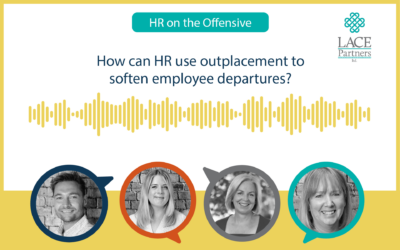In a recent HR on the Offensive Podcast Chris and Max from spoke to Andrew Holmes from Skillsoft about the changes that the online learning platform had seen in 2020 moving in to 2021. Earlier this year they produced a report which focused on 2021 predictions for skills in tech, we discuss the core findings below.
You can download Skillsoft’s Lean into Tech: Skills Report here.
What was the motivation behind the report?
With the global pandemic shifting so much with regards to the way in which people work, we were intrigued to see what shifts had occurred in regards to learning consumption. We wanted to find out what the focus areas were for companies – particularly with regards to tech-based skills – and where they were looking to invest in as we exit this extraordinary period in all of our lives.
We analysed over six-and-a-half million visits to our platform over a 12-month period and wanted to marry this with the qualitative conversations we had been having with our clients. They had told us the impact that technology and enhanced digitisation was having on everything in their business; from customer experience to supply chains and driving efficiencies. The aim was to be able to provide leading insights on the future skills that businesses will need to start looking at, whether that be internally or externally through talent attraction.
What were some of the key highlights identified?
This will probably come as a surprise to few people, but the volume of learning increased online, with people looking to take time whilst on furlough to improve their own skills base for example. From our own data we saw a 52% increase in the number of hours of learning in 2020 compared to 2019. More than half of those courses were around the concept of being agile. Companies have used this theme of ‘agile’ and applied it across various divisions within the business, not just across the IT or and tech function. There’s a strong investment in agile methodologies to meet business demand.
We’ve seen this and LACE have seen this too whereby HR teams are building smaller, agile, ‘sprint’ teams to deliver specific HR outcomes.
A good example is the programming language Python. Our results showed more and more businesses using Python with regards to their data than ever before and more departments using it too. It is no longer the sole preserve of the IT department as we’re seeing that increasingly businesses are using tools for data visualisation and interpretation which involves Python in elements of scripting.
Are there any other skills that you have seen a demand in online learning for?
We’ve seen a large number of new roles related to cloud operations (we touch on the importance of this in our blog on Cloud readiness) as organisations make strategic decisions to renovate the core of their structure. As a result of the pandemic many organisations realised the importance of moving from ‘on premise’ to the Cloud and we’ve seen this demand reflected in the types of skills courses individuals are learning online.
Where do organisations look for these new skills? Existing staff or new talent?
What we found fascinating from our findings in the report was that whilst we saw an increase in learning skill hours, we also saw a 36% decrease in the number of job postings across the businesses we spoke to, as companies became a more conservative over a new hire. That need for risk mitigation whilst also seeing businesses require to change their approach to working created a perfect storm in a sense, because businesses started looking at upskilling their existing people whether on furlough or not, so they could be ready for new ways of working and new approaches.
This idea of ‘pre-skilling’ the workforce in anticipation for demand was a constant discussion point when speaking to our clients and looking at the data we compiled for the report.
Are you seeing that any profiles of people are making the transition to re-skilling than others?
I think we are seeing less what I would call ‘silo’ skills (e.g. application programmer focused on SAP) and more push for people who can demonstrate the skills to work across multiple platforms, engage with different types of stakeholders in the business and really have that ‘agile mindset’. This is a level of digital dexterity and an ability to operate across all functions, not just IT and certainly we have seen that in the HR space too.
The ‘softer skills’, like virtual collaboration, are areas that we see a lot more demand too. How to develop those softer skills and identifying people with the right behavioural styles and personality styles is key too. The importance is about finding the development pathway amongst the individuals within your own internal talent pool and having access to systems and processes which enable the individuals to upskill in the most efficient manner.
Company culture is important too. If your company culture is one of inclusivity and adaptability, then these are the foundational starting points. If leadership is more inclusive and removes the fear of failure – it is seen as part of a process and not a negative – then you find that is easier to permeate down to the employees of the workforce.
If you’d like to speak to Andrew about Skillsoft and how they can help you can reach out to him on LinkedIn.
If you’d like to talk about your strategy around mapping out your future workforce requirements or preparing your people for cloud readiness you can get in touch and we’d be happy to discuss your needs.









